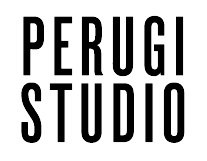I spoke to Jonathan Gold who recently graduated from Berkeley School of Music in composing. He was very thoughtful and articulate in describing the painting I had at Galatea. We found that the creative process of painting and compoing had a lot in common. (Video below).
JONATHAN: “I am extremely drawn to the balance between softness and stasis as well as like a kind of violence with the scratching texture. It’s very evocative unlike a lot of representational art. That’s why I love Expressionism so much.”
“It forces a deeper and more personal response as I’m forced to take it in and react to it and then try to put it all together. Pieces like this draw me in. There’s an ineffability about it. But it’s beautiful, subtle, but bold. It’s hard to do that.”
DEB: “And you relate to it in this way, because of what you do with your music?”
JONATHAN: “Yeah, I’m a composer of avant garde music, minimalistic music, but music that puts the listener into, I would say, a meditative state. It’s a state that’s sort of paralysis and forces us into a listening position versus a reactive position. You know, the world around us and everything around us keeps changing, but we’re forced to stop. And I do that through very slow rates of change, as well as striking dissonance.”
(Back to painting) “There’s something very striking about this. I think there’s a level of dissonance. But also a level of harmony. I love the way it’s sectioned off. There are pieces that absolutely fit together versus like an unobstructed, undivided, undifferentiated form field of color like you might find in other paintings.”
“Lots and lots of just beautiful texture and dimensionality too, which is important. I think we want to capture complexity, the complexity of life, complexity of our experience. And it’s impossible to do that if you don’t have a great deal of dimensionality to your work, in my opinion.”
“I think this is, to me, successful. You can see all this nuance, this scratches and different colors and combinations of colors are revealed underneath, and there’s darkness, and there’s light, and I love the way that those things interact. And then there’s a a splash of bold… I’m not going to call it neon. which is also subtly represented here in a smaller section. I love that a lot.”
DEB: “That’s really great. That really helps me. Thank you so much for commenting. A lot of it is not intentional, but a subconscious expression.”
JONATHAN: “When people hear my work and they say, “I love how this happened”, and it made me feel this way. I didn’t mean for any of that to happen. But, that’s inherent to the complexity of our expression or our emotion. We don’t even understand it. It just sort of happens. The spontaneity of it is, to me, magical.”
DEB: “And a bit of serendipity.”
JONATHAN: “Absolutely.”
DEB: “I start off with a very simple layer and build upon layer upon layer but it’s not finished. And I keep adding layers and removing parts that I don’t like that don’t work. I take that off. And this can take hours until you’re like, “that’s it”.”
JONATHAN: “Right… “That’s it. I’m done.” And it’s great when we reach that point. You know, I’ve had pieces where I build up these huge structures, these, and then I tear them down. build them back up and sometimes you put everything out there and you exactly you whittle away until it’s just the right balance and combination of everything you’ve already put on there and as you said there’s an additive and subtractive element that to me is is true balance. Some people don’t know when to stop. They just put everything there and then, that’s it.”
DEB: “That’s an interesting connection that you’ve made between art and design.
JONATHAN: “Yeah, I’m very inspired by art, especially abstract art. It’s more exciting, it’s more expressive to me. It’s a great piece.
DEB: “There will be more coming! Thank you.”
JONATHAN: “Of course!”

